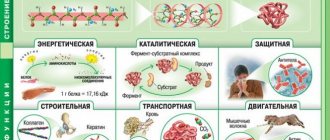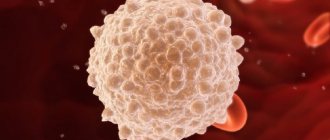Types of steatorrhea
The need to learn about what steatorrhea is can arise at any age.
This problem can affect an infant or older child, an adult or an elderly person. One of the manifestations of this pathology is fatty diarrhea. Experts distinguish several types of steatorrhea:
- Nutritional steatorrhea, also called food steatorrhea. It occurs as a result of excessive consumption of fatty foods, which even the body of a healthy person cannot digest, as a result of which feces with fat are excreted from the body. A breastfed baby may have sticky stools as a result of drinking too much fatty breast milk.
- Pancreatic steatorrhea is a pathology that develops as a result of insufficient production of the lipase enzyme by the pancreas (necessary for the breakdown of fats).
- Enterogenous steatorrhea (intestinal), resulting from decreased metabolism of the mucous membrane of the small intestine.
There are three forms in which this clinical symptom can manifest itself. One of these forms is the presence of neutral fat in feces, which should not be considered a health hazard. Another form of steatorrhea is the presence of fatty acids in the stool. There are often cases when the pathology manifests itself as a combination of both forms, accompanied by fatty feces in large quantities.
Mucus in stool
Not detected - Normally, mucus in stool is not detected as a separate structure, but is completely mixed with it.
Detected - With increased mucus secretion, it is detected in the stool as streaks and plaques of light yellow or white color. This can happen with an intestinal infection, benign or malignant formation in the intestine.
In children under one year of age, excess mucus in the stool is normal, since the intestines are still adapting to work. An increase in the amount of mucus can occur when the balance of microflora is disturbed, and when complementary foods are introduced for which the child is not yet ready.
How to recognize steatorrhea?
The symptoms by which this pathology can be suspected are quite specific.
Firstly, without fail, the stool becomes copious and liquid. Patients feel a regular urge to defecate. However, it is not uncommon for sticky, loose stools with too much fat to develop into constipation. In this case, fatty acid salts are determined in a coprogram (a complex analysis that determines the digestive ability of the gastrointestinal tract). Secondly, the color of the stool changes - it acquires a grayish-light tint. Also, cases where the stool in an adult with steatorrhea is normal and has a natural color are no exception.
Thirdly, patients experience severe dizziness, bloating and rumbling that occurs in the upper gastrointestinal tract. Loose stools are accompanied by drying out of the oral mucosa. Frequent coughing occurs, which increases discomfort. There is a significant deterioration in the patient's condition, and his performance decreases.
In children, steatorrhea, treatment of which should begin only after an accurate diagnosis has been made, is also manifested by loose, oily stools, and is often combined with amilorrhea (excessive starch in the stool). Children are worried about pain in the intestines, heartburn, and frequent bowel movements. An excessive amount of fat is visually detected in a baby's stool, which, for example, can cause diapers to be poorly washed. Symptoms in infants include rapid weight loss and dehydration as moisture is released in the stool. This condition is very dangerous for a newborn, so parents should be able to sound the alarm in time and consult a local doctor.
Causes leading to diarrhea
Currently, the most common cause of loose stools, especially in infants, are viral diseases - adenovirus, rotavirus. The virus can cause illness both in summer and in winter; such outbreaks often occur in a hospital or in a children's group. Parasites are also one of the causes of digestive upset, especially Giardia, Cryptosporidium, Microsporidia and others. From taking medications, a child may develop dysbiosis, which often manifests itself as diarrhea. If a baby has lactase deficiency, after drinking milk, the condition worsens, pain appears in the tummy, rumbling occurs and diarrhea occurs. If a child has sugar deficiency, then indigestion occurs after eating foods with added sugar. Babies have enteropathic dermatitis, which begins to appear after stopping breastfeeding, the child begins to lose weight, hair becomes brittle and falls out, stools are usually liquid and greasy, and are difficult to wash off; the same symptoms also occur with a lack of zinc in the body. If a child is over a year old, he may develop irritable bowel syndrome, which also affects the functioning of the digestive tract. Diarrhea can be one of the signs of ulcerative colitis, Crohn's disease, and chronic liver damage.
Why is steatorrhea dangerous?
Steatorrhea can cause a number of specific complications. Due to a malfunction in the absorption of nutrients in the intestine, the following develops:
- protein deficiency,
- hypovitaminosis,
- weight loss,
- malabsorption,
- violation of water-salt balance,
- oxaluria – oxalic acid leaves the body in excessive amounts,
- pathologies of the kidneys, liver, respiratory system, heart, brain,
- psychological symptoms.
Steatorrhea is particularly dangerous for pregnant women. It can provoke a decrease in blood clotting, which threatens bleeding during childbirth. There is also a risk of pathological processes occurring in the bones of the fetus. If treatment is not started in a timely manner, a pregnant woman and her child may experience deterioration in vision and skin.
Therefore, it is very important to provide both children and adults with timely and correct treatment at the first signs of this pathology. Traditional medicine can only alleviate the patient’s condition, so there is no need to place high hopes on it.
Effective treatment can only be prescribed by a specialist after conducting a series of tests that will help understand what caused loose stools.
By starting treatment on time, you will be able to avoid the unpleasant and dangerous consequences of the disease.
Fats, saturated and unsaturated
We get saturated fats mainly from milk, meat, fish and poultry. All of them, without exception, contain cholesterol, a substance that performs many important physiological functions in our body.
Unsaturated fats are mostly of plant origin. And since vegetable oils do not contain cholesterol in principle, advertising labels such as “No Cholesterol” on the labels of olive, sunflower, mustard or flaxseed oil are at least unnecessary.
Controlling the amount of cholesterol in the diet is the destiny of adults, especially after the age of 40. Cholesterol is vital for a growing body. Without it, normal functioning of the brain and internal organs is impossible.
In the wonderful film “French Lessons”, a very smart boy living from hand to mouth, on only potatoes, could not learn the educational material. The French teacher, realizing this, instead of extra lessons, “lost” money to the student so that he could sometimes buy a glass of milk at the market. Whole milk contains a lot of cholesterol, and the boy’s academic performance took a turn for the worse.
In addition, this substance is necessary for the synthesis of vital hormones of the adrenal cortex, as well as for the production of sex hormones. It is skin cholesterol that, under the influence of sunlight, is converted into vitamin D and promotes better absorption of calcium and phosphorus.
However, does this mean that a child can eat oily, fatty foods without restriction? And how should a schoolchild prepare breakfast, lunch and dinner so that he has enough fat?
Diagnostic methods
First of all, the specialist collects an anamnesis. It is determined when the greasy sheen of stool appeared, how much is released per day, what symptoms bother the patient. It is also important to find out whether the patient has any chronic or hereditary diseases, whether he has taken any medications for a long period, whether he has had contact with toxic substances, etc.
The doctor assesses the condition of the organs involved in fat processing. For this, the patient is examined and palpated on the left side of the abdomen. Using tapping, the sizes of the spleen, liver and pancreas are determined.
The method of macroscopic examination (visual assessment) of stool helps to determine the pronounced oily character. Often, the stool is liquid and light-colored—much lighter than normal. Laboratory analysis of stool can reveal excess fats, soaps and fatty acids.
If it turns out that 7 g or more fat is excreted in the stool per day, the doctor diagnoses steatorrhea.
If you find soap in your stool, you should not panic, since the presence of this substance is normal and indicates normal functioning of the gastrointestinal tract. The presence of fatty acids in feces in small quantities may be the norm for breastfed and bottle-fed children, while for older children and adults this is considered a pathology.
A more accurate method is radioisotope research. It allows you to find out the cause of disorders in the breakdown and absorption of fats. Its essence lies in the introduction of radioactive isotopes into the digestive tract.
To make a diagnosis, a specialist may prescribe a fat loading technique. Based on the results obtained, diseases of the pancreas or intestines can be excluded.
Additional methods may include ultrasound of the abdominal organs, colonoscopy, determination of hormone levels, and consultation with other specialists. The results of these studies will help clarify the diagnosis.
Connective tissue in stool
Not detected – During normal digestion, connective tissue is not detected in the stool.
Detected - The presence of meat food residues indicates insufficient function of the digestive glands, or an excess of meat in the diet. The connective tissue may visually resemble parts of helminths, thick mucus, or a fungal infection. Microscopy gives an idea of the structure of connective tissue fibers. Children who receive meat feeding before the age of one year have a large amount of undigested muscle fibers in their feces.
Treatment options
Treatment of steatorrhea involves eliminating the cause that caused this pathology. Based on the results of the coprogram and other studies, the doctor prescribes drugs containing lipase in high concentrations. It is this substance that helps fats be absorbed in the small intestine. Enzyme-containing preparations help stabilize digestion and normalize work processes in the intestines and throughout the gastrointestinal tract.
Fatty acids detected in the stool are a signal for the prescription of antacids. These substances help reduce the effect of stomach acid, enhancing the effect of enzyme agents. Neutral fat in feces is also a reason for patients to follow a special diet, excluding fried, pickled, smoked foods, and alcohol. At the same time, the menu includes milk, fish, cottage cheese, lean meats, preferably steamed.
If the case is advanced, the doctor may prescribe the patient a remedy containing adrenocorticotropic hormone and hydrochloric acid. A mandatory point in the treatment of steatorrhea is the intake of vitamins A, D, E, K, and B vitamins. Therapy is carried out using nicotinic and ascorbic acid. In infants, the presence of neutral fat in the stool in the form of drops is allowed. This condition does not require treatment.
Leukocytes in stool
Not detected/single – Single leukocytes in the stool may be present in a healthy person.
Single leukocytes, mucus, brown feces with bright red coatings - Changes are characteristic of inflammation of the rectum, hemorrhoids.
Found in large numbers, columnar epithelium - The presence of a large number of leukocytes indicates acute or chronic inflammation of the digestive tract. Columnar epithelium indicates that most likely the source of inflammation is in the duodenum or upper parts of the small intestine.
Found in large numbers, squamous epithelium, mucus - A large number of leukocytes and the presence of squamous epithelium indicates inflammation of the rectum, possibly a tumor or the presence of polyps.
Features of prevention
The development of steatorrhea can be prevented by following the basic rules of primary prevention. They boil down to the following:
- Give up bad habits or reduce them to a minimum. Often, smoking and alcohol play an important role in the development of many diseases.
- Monitor your own health. You should have regular checkups with your doctor. If the condition worsens, you should not self-medicate. There is no need to take a remedy prescribed for yourself. It is important not to let the disease get worse and start treating it on time.
- Pay attention to your diet. It is important to avoid eating unhealthy, low-quality foods (fatty, smoked foods, alcohol). Consume dairy products, low-fat broths, and seafood, which improve the functioning of the thyroid gland. The diet should be based on fractional meals.
- Strengthen the immune system - exercise, often be in the fresh air, take multivitamin complexes.
- Maintain personal hygiene. Wash your hands not only after using the toilet, but also after visiting public places. This will avoid common stomach upset, diarrhea and serious illnesses in which steatorrhea is observed.
If a pathology is detected, it is important to undergo a timely and correctly prescribed course of treatment. This is the basis of secondary prevention. Thanks to early contact with a specialist, you will be able to avoid unpleasant consequences for your own health and the health of your children.
Vegetable oils
The energy value of vegetable oils is 9 kcal/g. Even ghee is inferior to them in calorie content (8.87 kcal/g), not to mention butter (5.7-7.5 kcal/g).
In the diet of schoolchildren, two-thirds animal fats should account for one-third vegetable fats. It is enough for a child to receive 1-2 tablespoons of sunflower, olive, flaxseed or any other vegetable oil, but every day!
The basis of vegetable oils are polyunsaturated fatty acids. Among them there are essential ones - linoleic, linolenic and arachidonic, which the body cannot synthesize itself.
Linoleic acid is the only one that can be converted into other polyunsaturated acids and protect the body from their deficiency. Polyunsaturated fatty acids are very important, since they synthesize hormone-like substances, prostaglandins, which serve as conductors of many processes in our body. Sunflower, cottonseed, corn, and soybean oils are especially rich in linoleic acid.
Among vegetable oils, olive oil occupies a special position in the composition of fatty acids. It also contains monounsaturated fatty acids, which have the ability to actively prevent the development of atherosclerosis. Refined olive oil is best suited for frying. It boils and acquires harmful properties for the body at a higher temperature than other vegetable oils, so it is easier to tolerate for people with sensitive digestion.
In the diet of children and adolescents, fried foods should be rare, and deep-frying should be completely unacceptable. Even light frying has an extremely negative effect on the beneficial properties of vegetable oils. In experimental animal cubs that were fed only heated fats, the development of the body slowed down. Heated corn oil caused an unhealthy accumulation of fat in the heart cells of experimental rats. This effect is neutralized by unrefined oils consumed cold.
When buying vegetable oil, you should pay attention to the label. Cold pressed oil is best. It retains more vitamins, polyunsaturated fatty acids and phospholipids necessary for normal brain function and strong immunity. However, you need to be careful: cold pressing greatly reduces the shelf life of the oil.
Poultry fat
Poultry fat is not of particular value because it undergoes a rather long heat treatment. It is better to choose lean chickens for children, preferably white meat (breast). Chicken legs are more suitable for feeding young adult men engaged in physical work than for the diet of schoolchildren.
A piece of baked duck or goose is a very serious test for the digestive system of not only a child, but also an adult. It is no coincidence that poultry has long been cooked with apples: the pectin of baked apples improves digestion and absorption of fats.
Natalya Bezyazykova, nutritionist Article provided by the magazine “Schoolchildren’s Health”
Vitamin superhero
The most valuable component of vegetable oils is vitamin E (tocopherol), which regulates the activity of all bioactive factors. In recent years, more and more beneficial properties of this vitamin have been discovered, and it has acquired the status of a superhero. Recent studies by American scientists have shown that it increases the average life expectancy of experimental animals.
Along with sunflower oil, cottonseed oil, corn oil and especially soybean oil are also high in vitamin E.
The average vitamin E requirement of a school-age child’s body is from 15 to 30 mg, depending on age and body weight. 20 g of refined soybean oil contains 22 mg of tocopherols, the same amount of refined cottonseed oil - 19.9 mg, corn - 18.6 mg and sunflower - 13.4 mg. So, 1-2 tablespoons of any vegetable oil per day is enough to meet the student’s need for vitamin E.
Why is vitamin E especially valuable for a schoolchild?
- For general physical development. Increases oxygen supply to the body, increases endurance, and reduces fatigue.
- For the lungs. Protects the lungs from polluted air, acting together with vitamin A.
- For blood condition. Prevents the appearance of blood clots in blood vessels and promotes the dissolution of already formed blood clots.
- For wound healing. Vitamin E can be absorbed not only when taken orally, but also absorbed through the skin. It prevents the development of coarse scar tissue, protects against the formation of constricting scars after wounds and operations. Accelerates the healing of burns.
- For the muscular system. Helps relieve leg cramps that sometimes occur after physical exertion.
Vitamin E is found in wheat germ (wheat germ flakes) and soybeans. There is tocopherol in Brussels sprouts, broccoli, and spinach, and it is also preserved in frozen foods. Whole cereals and egg yolks are also rich in this vitamin.











